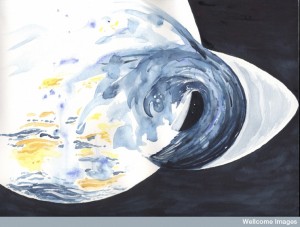Enjoyed our last two tweet chats? We did, so we’ve organised another!
It will be on Wednesday 19th November at 3pm GMT, do join us, all are welcome.
Follow us on @EBMentalHealth and use #EBMHchat to join in.
Chat topic:
Treating bipolar depression, the most common and vexing part of bipolar disorder
Invited guest author: Professor Trevor Young, Department of Psychiatry, University of Toronto
Bipolar disorder is a potentially lifelong and disabling condition characterised by episodes of mania (abnormally elevated mood or irritability and related symptoms with severe functional impairment or psychotic symptoms for 7 days or more) or hypomania (abnormally elevated mood or irritability and related symptoms with decreased or increased function for 4 days or more) and episodes of depressed mood. It is often comorbid with other disorders such as anxiety disorders, substance misuse, personality disorders and attention deficit hyperactivity disorder (ADHD). The peak age of onset is 15–19 years, and there is often a substantial delay between onset and first contact with mental health services. The lifetime prevalence of bipolar I disorder (mania and depression) is estimated at 1% of the adult population, and bipolar II disorder (hypomania and depression) affects approximately 0.4% of adults. Bipolar disorder in children under 12 years is very rare.
Bipolar disorder is among the top causes of worldwide disability. The depressive symptoms are now recognised to be the predominant cause of personal, social and functional impairment in the long term for most people with bipolar disorder. Prior to 1999, the treatment of bipolar depression had been little studied and there was uncertainty about the treatment of this phase of the disorder. In the past, bipolar depression was lumped in with unipolar depression, but a growing body of research suggests that there are significant differences between the two, especially when it comes to recommended treatments. Most people with bipolar depression are not helped by antidepressants. In fact, there is a risk that antidepressants can make bipolar disorder worse—triggering mania or hypomania, causing rapid cycling between mood states, or interfering with other mood stabilizing drugs.
Despite many similarities, certain symptoms are more common in bipolar depression than in unipolar depression. For example, bipolar depression is more likely to involve irritability, guilt, unpredictable mood swings, and feelings of restlessness. People with bipolar depression also tend to move and speak slowly, sleep a lot, and gain weight. In addition, they are more likely to develop psychotic depression—a condition in which they’ve lost contact with reality—and to experience major disability in work and social functioning.
Common symptoms of bipolar depression include:
|
|
During this tweet chat, Professor Trevor Young will answer your questions about the main clinical issues that mental health professionals, patients and carers face when dealing with bipolar depression. In preparation of the chat, we suggest to read two of the most recent guidelines on the matter (see below). Our discussion will start from there.
Supporting material:
CANMAT guidelines (2013):
http://www.canmat.org/resources/CANMAT%20Bipolar%20Disorder%20Guidelines%20-2013%20Update.pdf
NICE guidelines (2014):
http://www.nice.org.uk/guidance/cg185
For the general public – more info about bipolar disorder:
http://www.nhs.uk/Conditions/Bipolar-disorder/Pages/Introduction.aspx
If you would like to pre-submit a question for Trevor and EBMH for the tweet chat, do send it by either direct messaging @EBMentalHealth using #EBMHchat on Twitter or on the EBMH Facebook page: /Evidence.Based.Mental.Health or below this blog, in the comments section.
Participating in the tweet chat: the mechanics
To join in you will need to have a Twitter account. To sign up to Twitter, click here (it doesn’t take long and make sure you follow us!).
When it comes to the tweet chat, we suggest you use tchat.io. This is a specific site used for tweet chats as it cuts out all the other distractions on Twitter. Log into tchat.io using your Twitter details, then type #EBMHchat into the search bar. This pulls up all the tweets using the hashtag. You can tweet from here and it will automatically add the correct hashtag at the end of each tweet for those overexcited tweeps!
You can otherwise tweet using twitter, but you need to make sure you add the hashtag to each tweet otherwise we won’t see it.
EBMH chat representatives:
@EBMentalHealth – will be looked after by EBMH Associate Editor and chat host, Michael Ostacher
@ltyoungmd – is our guest author, Trevor Young
@And_Cipriani – EBMH Editor and chat facilitator, Andrea Cipriani
@MillwardHolly – EBMH Associate Editor and chat facilitator, Holly Millward
Image credit: Susan Lockhart, Wellcome Images. The painting attempts to illustrate two extreme mood phases of Bipolar Disorder, which may be cyclical and is shown here by an eye. On the right hand side of the picture, the eye (iris and pupil) against a dark background resembles a low level of energy and depression. The left side of the picture in contrast, illustrates the opposing mood of elation and high energy level by means of a wave breaking on a sunny beach. February 2011.
